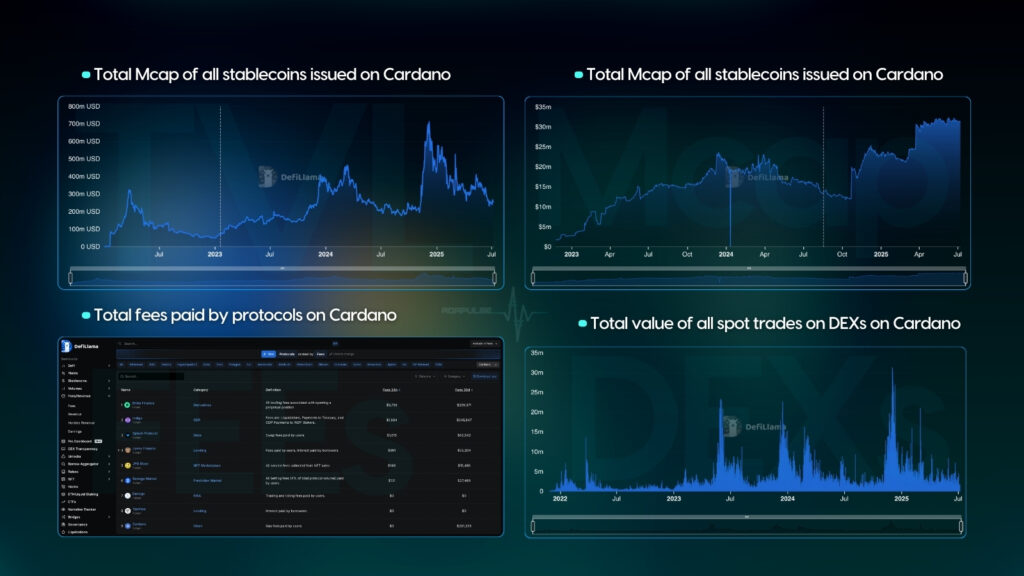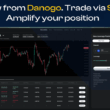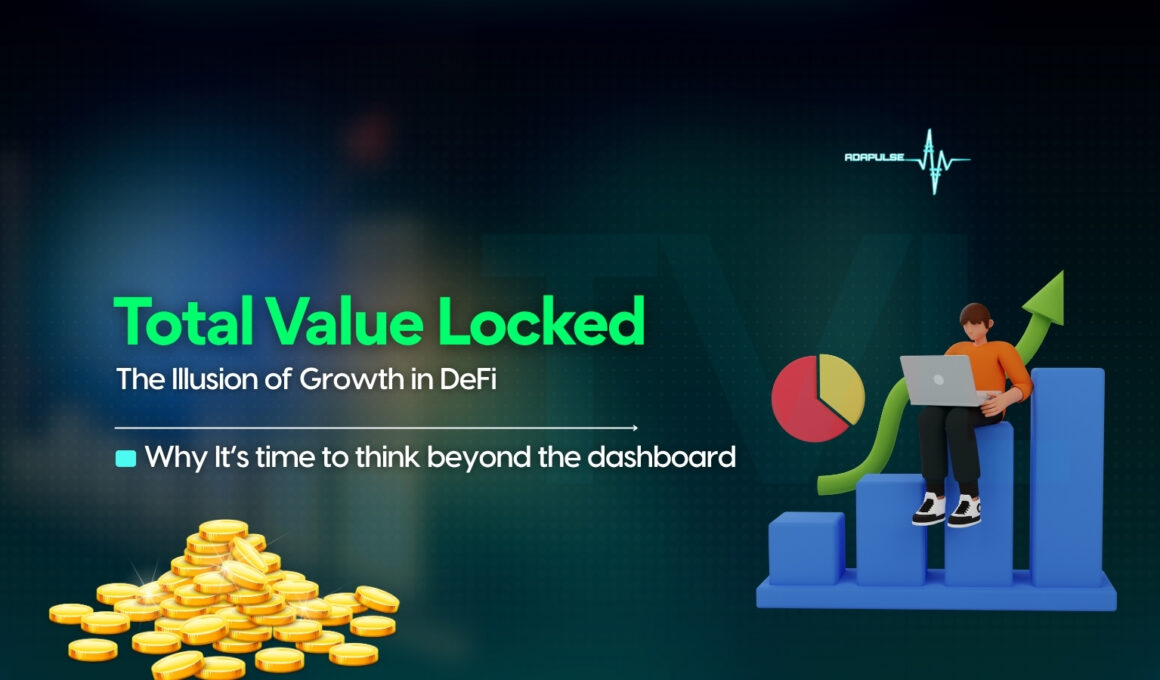Total Value Locked has become the go to number in DeFi. It shows up on dashboards, protocol pages, token reports even in investor pitch decks. On first impression, it seems like a simple way to track growth. If the number is going up, the project must be doing well. That’s what we were told to believe.
Not so fast. If you look closely, you’ll see that TVL hides important details. It doesn’t show where the value is coming from, how long it stays or how quickly it can disappear. In Cardano’s DeFi ecosystem, where traders value long term sustainability and careful innovation, this matters even more. Depending on Total Value Locked alone can lead to overconfidence, poor risk assessment and misplaced priorities.
Where Did Total Value Locked Come From?
In DeFi’s early days, traders needed a quick way to gauge protocol traction. Total Value Locked became that shortcut. It started as a simple count of people deposited assets in smart contracts. If a lending protocol held $50 million in assets, that was its TVL.
The logic was, more TVL equals more trust. It meant people were using the app and locking their funds inside. TVL took off because it was easy to track and easy to compare across platforms. But over time, projects started optimizing for the number rather than the underlying health. This is where the deformation began.
What Total Value Locked Really Measures
Total Value Locked actually reflects the current market value in dollars of assets locked inside smart contracts. That includes ADA in liquidity pools, stablecoins in vaults, synthetic assets on leverage platforms and even yield bearing tokens. But the number is fluid, it moves with the market.
- When rices go up, TVL rises.
- A trader borrows and redeposits. Then, it’s counted again.
- As rewards increase, liquidity rushes in but doesn’t always stay.
TVL Is not Always Proof of Real Growth
To make it clear, Total Value Locked can be heavily deformed by several practices.
- A trader supplies an asset, borrows a stablecoin, swaps it and resupplies it, all in the same protocol. This inflates the TVL multiple times with the same underlying value.
- Many protocols launch with high APYs to attract people. When the rewards drop, so does the liquidity.
- If the market pumps, a protocol’s TVL can look like it’s growing even if no new trader show up.
- When you see TVL jump from $10 million to $60 million in a week, ask yourself did people activity increase or did the market just pump and a few whales looped positions.
How Cardano Approaches TVL Differently

Cardano’s DeFi culture is still in form and there’s a clear difference. Builders focus more on sustainability than flash metrics. Instead of launching yield farms with aggressive dilution, many Cardano protocols prioritize sound tokenomics, safety audits and long term community alignment.
Projects like Liqwid, Indigo and Minswap have seen steady participation without artificial TVL spikes. Some Cardano dApps sometimes delay TVL focused dashboards to avoid creating hype without depth.
Ethereum’s DeFi summer in 2020 cemented TVL as a dominant metric. Projects like Aave and Curve used it to build trust with early traders and VCs. Solana, with its fast transaction speeds, also saw quick spikes in TVL often tied to token launch strategies and farm incentives.
But Cardano entered later with a more careful rollout. The absence of VC backed hype in many Cardano projects meant fewer TVL games and more attention to real adoption. That makes Cardano’s TVL more honest and potentially more resilient.
What Should We Measure Instead
TVL only shows what’s locked. It does not tell you who’s locking it, why or how long it will stay. This is what paints a more accurate picture. These metrics are not always fashionable but they matter more for understanding DeFi’s true strength.
- Sticky Liquidity: All the funds that stay even after token rewards end.
- Daily Active Users (DAUs): A better way to measure community engagement.
- Protocol-Owned Liquidity (POL): The Liquidity the protocol controls itself which is harder to manipulate.
- Revenue and Fees: The sustainable income shows product market fit.
- Wallet Age and Behavior: This answer that question. Are users new or are they loyal.
Builders Are Speaking Up
In an earlier ecosystem AMA, Liqwid co-founder Dewayne Cameron highlighted that “value locked should be tied to value created. His point is that protocols should focus on capital efficiency and people retention not just hitting high numbers.
Similarly, Indigo’s developers have hinted at integrating new metrics that focus on vault health and overcollateralization ratios, which offer far more insight than raw TVL numbers. These builders are not rejecting metrics but choosing better ones.
Platforms like TapTools, DeFiLlama and Cexplorer now report not only Total Value Locked but also people behaviors, staking flows and asset distribution. Some even visualize liquidity across time, helping traders spot exit trends. For instance, Minswap provides a full breakdown of pool volumes, fee revenues, and daily activity. This allows users to distinguish between real traction and temporary volume spikes.
Beginner Tips for Using TVL Wisely
If you’re new to DeFi and exploring Cardano dApps, here are four practical ways to use TVL without being misled
- Don’t treat TVL as a leaderboard but look at volume, traders and revenue too.
- Be cautious with protocols that just launched but show sudden TVL spikes.
- Use historical charts that sustained growth matters more than sharp jumps.
- Ask yourself would you trust the project without incentives.
The Warning and a Way Forward
If you chase TVL without context, you risk confusing borrowed hype for real traction. TVL is loud but incomplete. Especially in Cardano’s evolving ecosystem, relying on this metric alone could hinder traders to real value or create false expectations.
Instead, ask better questions. Follow protocols that explain what’s behind the numbers. Look at metrics that stick, not just those that spike. And when you onboard others to DeFi, teach them to read the whole picture. Because at the end of the day, the numbers that stay matter more than the numbers that shine.










